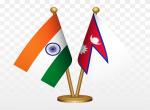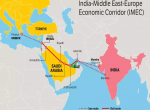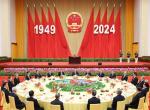The Donglang border crisis has been defused for nearly three months. However, up to now, the Sino-Indian relations have not completely out of the shadow and it is still in an atmosphere of suspicion and mistrust. There were many bilateral annual dialogues which had been scrubbed or postpone, even though the top leaders on both sides have held bilateral talks in Xiamen BRICS summit. So if the two sides are looking forward to see the broken relations back in a healthy track soon, the both governments should rethink on the strategic ties of the two countries and do all they can do for repairing the ties. They need to resume bilateral dialogues at various levels, especially the strategic level. They also need to restart relevant cooperation projects soon. The two sides should believe that any side’s friendly behavior in bilateral ties possibly could motivate the other side to think actively about their own behavior.
Hopefully, the two sides held the 10th round of the Working Mechanism for Consultation and Coordination on India-China Border Affairs (WMCC) in Beijing on 17 November. It was the first meeting of WMCC after 73-day long Donglang stand-off. It is reported that both sides reviewed the situation in all sectors of India-China border and agreed that maintenance of peace and tranquility in the border areas is an important prerequisite for sustained growth of bilateral relations. The two sides also exchanged views on further confidence building measures and strengthening of military-to-military contacts. Moreover, the 20th round of the China-Indian Special Representatives border talks will be held in December. In addition, Chinese Foreign Minister Wang Yi will visit Delhi next month to attend the Russia-India-China (RIC) Foreign Ministers’ trilateral meeting and hold talks with his Indian counterpart Sushma Swaraj and meet India’s top leadership.
Indeed, restarting the border talks is a very important and positive step for improving the current bilateral ties. But it’s not nearly enough due to the ties facing multiple challenges. The biggest challenge is the strategic distrust or suspicion between the two sides. The strategic distrust not only impedes the bilateral cooperation, but also deepens the security dilemma between the two nations.
Indian strategic distrust of China is, to a large extent, deeply rooted in history. With the Chinese comprehensive power and international standing growing up, Indian concerns and distrust increases as well. For instance, China’s recent OBOR initiative, especially CPEC and Chinese activities in the Indian Ocean contribute to Delhi’s deepening distrust of China. Meanwhile, China‘s strategic distrust of India gradually emerged in recent years, although it is not the dominant view of Chinese decision makers and strategic community, who prefer to believe the two emerging powers could develop a constructive and harmonious long-term relationship. Some Chinese strategic analysts have expressed concerns to India’s new policies in Indo–Pacific region, especially India’s increasing defense cooperation with US and Japan. China also watches carefully the revived US-Japan-India-Australia Quadrilateral Club.
Another big challenge is the negative sentiments between the two peoples toward each other. According the new survey from Pew research center, 41 percent of Indian public dislikes China, negative views outrank positive by 15 percentage points. Just 26 percent of the Indian public holds a positive view of Beijing compared with the 49 percent who see the US in a favorable light. Similarly, Chinese public views of India in recent years have see-sawed ever lower, and just 26 percent hold a favorable view of India in 2016 compared with 33 percent favorable in 2006. Donglang crisis has been further strengthened the negative feelings. Evidently, such serious negative sentiments may arise that is difficult to improve the Sino-Indian political relations and it will even hinder their economic and trade relations. In fact, there were already a few voices of boycotting Chinese products or Indian products in the two countries.
In addition, how to respond to a number of problems in China-Indian economic relations is also a challenge which can’t be ignored. For many years the two sides preferred to emphasize their bilateral economic and trade relations was mutually beneficial in nature and would promote the interests of developing countries. But both sides seemed to change the above perception recently and are inclined to emphasize competition between two economies. Given that economic ties are basic and critical pillars for China-Indian relations, making appropriate assessing and dealing with such competitions demands two sides’ attention without delay. Beyond that, two sides also should find a good way to reduce the growing trade deficit between the two countries.
Faced with so many challenges, it was hard to believe that the wounded Sino-Indian relations will fix itself quickly. Looking ahead this mutually important neighbor’s relationship can be back to a healthy track, but only if leaders and publics on both sides honestly acknowledge the challenges and take positive steps to address them.
First and foremost, both sides should rethink and reframe the China-Indian strategic relationship and restart the bilateral strategic dialogue soon. Second, the two governments should play more an engine role to expand related cooperation, including economic cooperation, functional cooperation in non-sensitive areas and preventive cooperation in security areas. Third, the two sides should encourage more two sides’ academic exchanges to promote mutual understanding and guide related people, institutions and media to use a positive discourse to describe the developments of bilateral ties and make the relationship appear valuable and friendly.
(The author is an Associate Professor in China National Center for South Asian Studies, Sichuan University)
(Views expressed are of the author and do not necessarily reflect the views of the VIF)
Image Source: http://www.latimes.com/world/la-fg-india-china-border-dispute-20170828-story.html










Post new comment